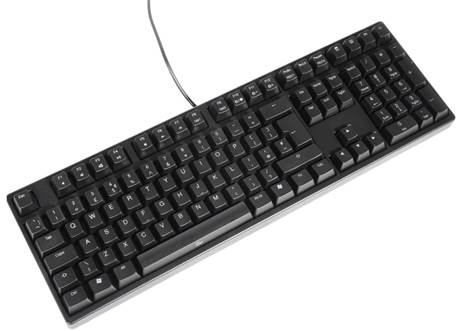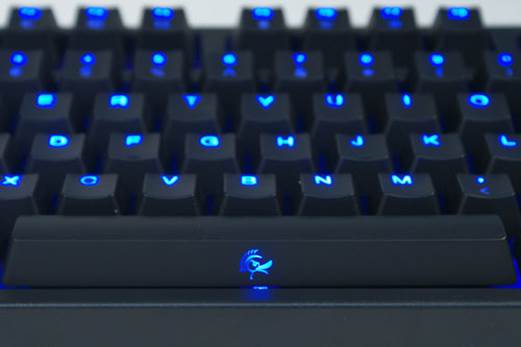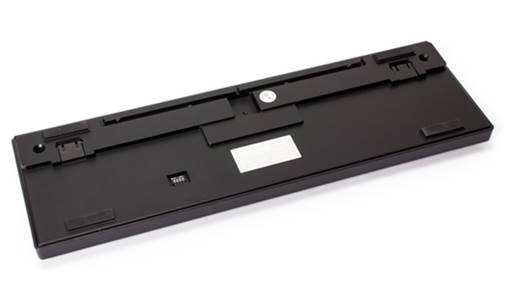Sherman-like build quality, but a
little light on extras
[+] Rubber duck - Well built; custom
backlight mapping
[-] Sitting duck - Light on features and
extras; bright backlight has limited appeal
Don’t worry if Ducky isn’t a name you
recognize; it was unknown to us too until the DK9008 Shine 2 touched down on
our desk. Based in Taiwan, the company produces a range of mechanical
keyboards, the pinnacle of which is the model splashed across this page.

Initial impressions of the Shine 2 were
mixed, though. On the plus side, its tank-like build quality is definitely a
positive. The keyboard’s hefty weight and solid build shouts quality, and it
means the Shine 2 could also be up to the task of caving in some zombie heads,
should the apocalypse strike when you don’t have a cricket bat to hand.
You don’t get an awful lot for your money,
however. We were left rooting around in the box for the wrist rest and set of
extra key caps we assumed would be present, only to find that neither were
included. This is rather surprising for a keyboard at this price – if you
dropped 150 notes on a keyboard, we assume you’d like to be comfortable while
you use it. Still, third-party wrist rests can be bought easily, and our
surprise soon gave way to wonderment, as we plugged in the Shine 2 and marveled
at arguably its most impressive feature, its backlit keys.
Each key is individually lit, which is
usual for backlit mechanical keyboards, and while the light on our model was
blue, other colors are available, including red, green, yellow and white. What
was impressive; though, was the sheer intensity of the light – on its highest
brightness level the intense neon letters are a dazzling sight to behold.

Each
key is individually lit, which is usual for backlit mechanical keyboards
Fortunately, tamer settings are available,
along with a number of playful backlighting modes. For example, you can switch
off all the lights except for the keys you’re pressing.
Arguably, it isn’t an entirely useful
feature, but it makes for a very pretty light show, similar to watching distant
lightning strikes on a dark night. You can also set the backlight to pulse, or
save specific lighting maps, in which you light only your selection of keys, to
either one of the two custom modes.
Underneath each of the key caps are Cherry
Black switches, which offer a medium level of resistance and no tactile
feedback, unlike Cherry Blue switches, which generate a tangible click when
actuated. In their favor, the Cherry Black switches are quite and feel more
natural to press than many alternative mechanical switches, but it’s largely a
matter of personal preference.
Beyond this, the Shine 2 is relatively
skinny on features though. There are the usual media shortcut keys [used via a
function button], but there’s no USB hub or audio pass-through capability
again, this is a surprise, given the price.

The
sheer intensity of the light is impressive – on its highest brightness level,
the intense neon letters are a dazzling sight to behold
Conclusion
The Ducky DK9008 Shine a is undoubtedly a
well-built and very attractive keyboard, but we expect more in terms of
features for the asking price of $23.
Compare it to the Mionix Zibal 60, for
example, which costs significantly less, has more features, a wrist rest, plus
mechanical keys and backlighting to boot.
The Shine 2 is undoubted a fantastic piece
of kit, but it’s a heck of a lot of money for a keyboard, and you’re only
really paying for the light show.
|
How much?
§ Price:
$225
§ Manufacture:
www.duckychannel.com/tw
In detail
§ Connection:
Wired, USB
§ Cable:
Unbraided, removable
§ Material:
Plastic & metal
§ Extras:
backlit keys
Scores
§ Design:
35 40
§ Features:
23/ 35
§ Value:
15/ 25
|